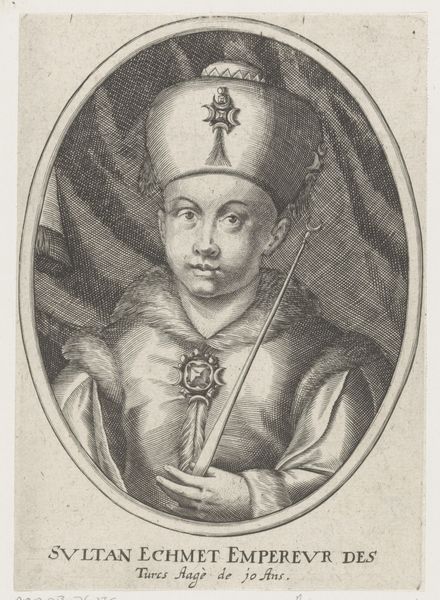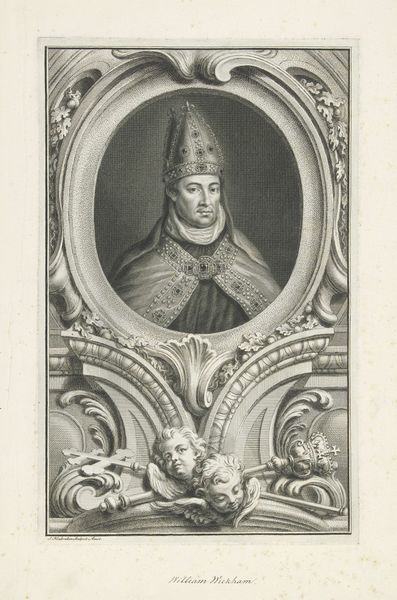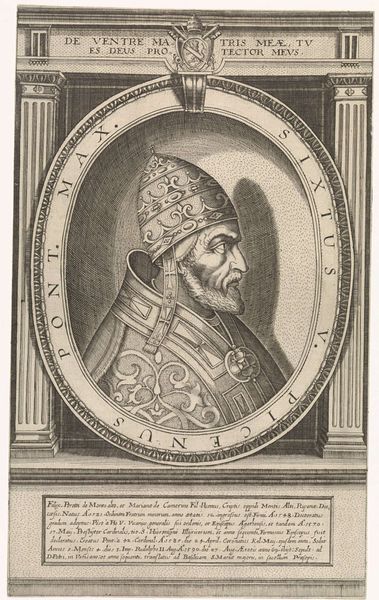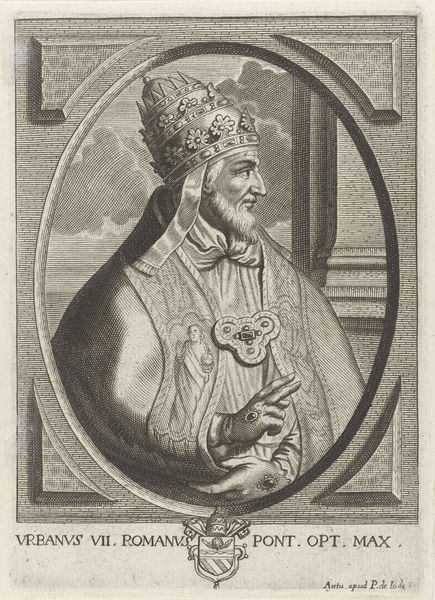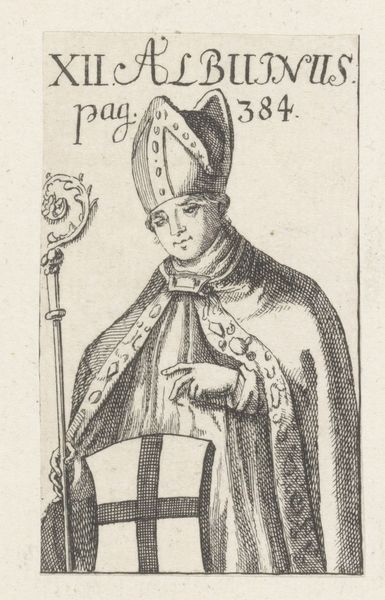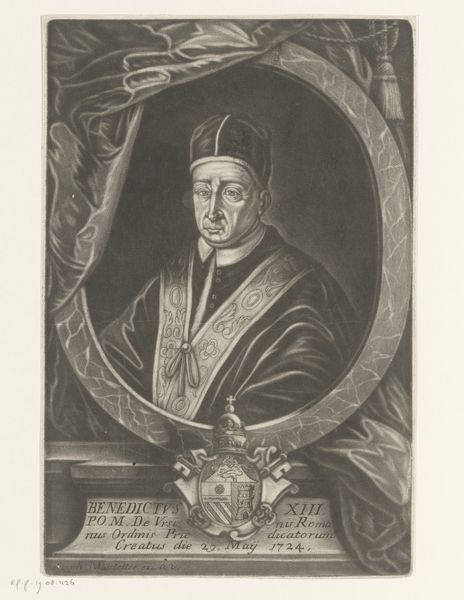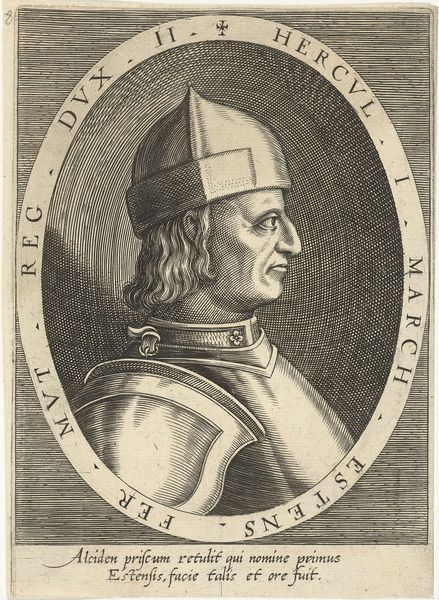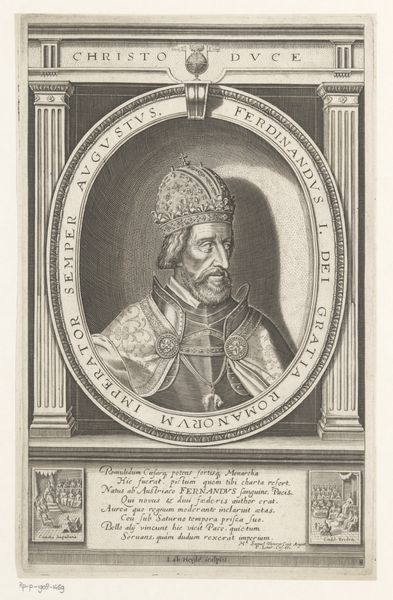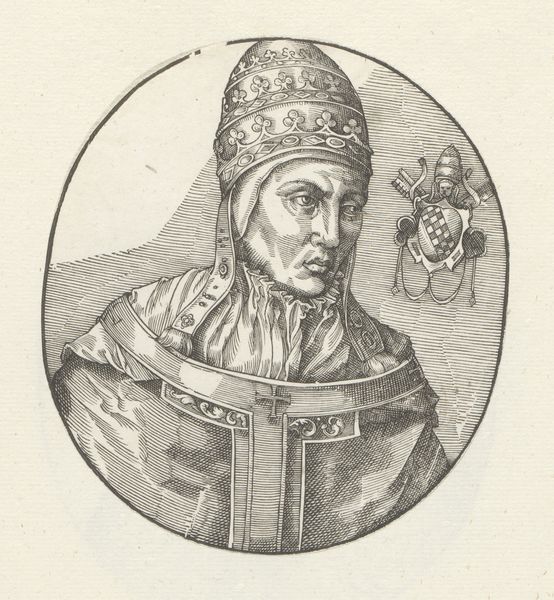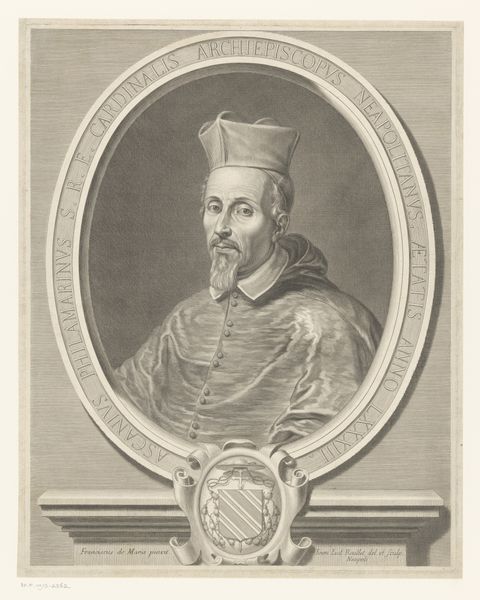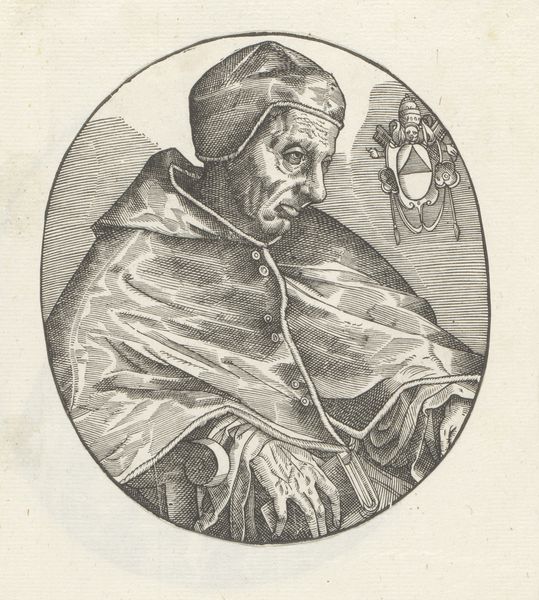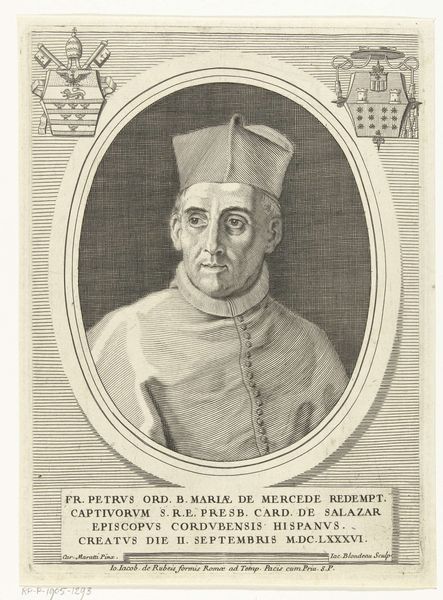
engraving
#
portrait
#
baroque
#
old engraving style
#
caricature
#
figuration
#
line
#
history-painting
#
academic-art
#
engraving
Dimensions: height 207 mm, width 147 mm
Copyright: Rijks Museum: Open Domain
Curator: Here we have Bernard Picart’s 1713 engraving, "Portrait of Antipope John XXIII," currently held in the Rijksmuseum collection. Editor: My eye is immediately drawn to the contrasting textures: the crisp, refined lines of the portrait itself versus the almost chaotic jumble of objects at the bottom. Curator: Picart's meticulous engraving work certainly emphasizes the social position of John XXIII. Consider the material implications – the time, skill, and resources required to create such a detailed print. It’s not merely an image; it's a product of significant labor. Editor: Indeed, but beyond that, note the visual language Picart employs. Chains, a tipped-over mitre, a bird perched atop keys – symbols of imprisonment, lost authority, and perhaps a false prophet guarding secrets. Curator: That interplay of signifiers adds a layer of commentary, agreed. But I also find it revealing to think about how the print functioned as a reproducible commodity. Who was it made for? Who could afford it? What ideas was it propagating through its circulation? Editor: Definitely an interesting point of view. To me, though, the real weight is in those symbolic choices. The fallen mitre, for example, speaks volumes about the contested legitimacy of John XXIII's papacy during the Western Schism. The imagery builds a narrative. Curator: True, but without the printing press – without the dissemination facilitated by material processes – those symbols would have remained much more limited in their reach and their influence. The means of production are integral to their cultural power. Editor: Fair enough. I appreciate that perspective – it’s about how the physical object carries symbolic weight. It urges us to think about the practical implications of creating and consuming images, something we often overlook. Curator: Exactly. It underscores how artistic choices are interwoven with the broader economic and social structures of the time. Seeing beyond the symbolic value reveals the network of forces shaping both the artwork and the society it reflects. Editor: Thanks to the chains that bind this artpiece, both materially and culturally!
Comments
No comments
Be the first to comment and join the conversation on the ultimate creative platform.
